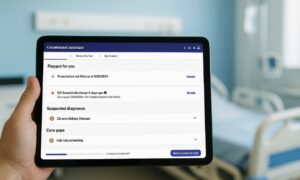In 2018, former President Trump signed a law seeking to release thousands of federal inmates. According to the Department of Justice (DOJ), the new law was put in the First Step Act and submitted to the Federal Register and applies to the Time Credits Program.
“Most inmates are willing to embrace any program that would reduce their jail term if they are eligible for such a program,” says Federal Attorney Rammy Barbari. The law enables eligible inmates who participate in the Evidence-Based Recidivism Reduction Program and Productive Activities to earn on an average 10 and 15 days of time credit for every 30 days. The Evidence-Based Recidivism Reduction Program and Productive Activities include programs like anger management, education, drug treatment, social skills, and classes focused on work.
Inmates can use the time credit earned in pre-release custody to receive an earlier placement. Inmates who earn up to 12 months of credit were allowed to apply for supervision release, which the Bureau of Prisons (BOP) is at liberty to grant.
What you should know About Time Credits Program
The time credits are used to receive placements earlier in pre-release custody cases. It helps judges exercise discretion in sentencing and allows prisoners to receive shorter jail terms. This bipartisan law is created to encourage inmates to participate in programs that reduce recidivism and help ease mandatory minimum sentences.
The Federal Bureau of Prisons transfers eligible inmates to home confinement, supervised release programs, or residential reentry centers to achieve this. This release is based on the decision that well-behaved inmates released to home confinement would not have to return to prison.
While some Republicans and Democrats consider the time credit program unfair and costly, this is a major step toward shrinking and overhauling the federal prison system. This law provides the Justice Department and the Bureau of Prisons leeway to consider credits for good behavior and job training as a condition for early release.
The First Step Act
To put more in place for additional aspects of the First Step Act, there has been increased pressure on the Biden administration by both Republican and Democratic lawmakers. However, because there has been a shortage in staffing the bureau, this has delayed the action.
Staff like nurses, teachers, and cooks have been compressed as correctional officers to guard inmates. This decision caused a decrease in the action of the First Step Act because these employees no longer have sufficient time to teach classes, provide inmates services, or even review release paperwork.
When the First Step Act was enacted, inmates were allowed to earn the time credit. They were not punished for non-participation in programs for reasons beyond their control. Instead, the inmates released were sent to supervised released homes, also known as halfway houses.
According to a version proposed in 2020, inmates would have eight hours to participate in prison jobs or academic programs to qualify for credit worth one day. For every 30 days inmates participated in a program, they earned 10 days. However, inmates would be eligible for additional five days of credit in 30 days if they remain in the lower-risk category.
Despite all these, the First Step Act faces challenges in the Justice Department, such as insufficient space for prison programs and assessing the needs and risks of all the inmates who use the new standard.
Conclusion
The Time Credit Program issued by the Justice Department under the 2018 criminal justice law provided a means for more prisoners to earn short terms when they engage in a program. Therefore, the Justice Department will transfer inmates out of federal prisons. This aims to shrink the number of inmates in jail.



































